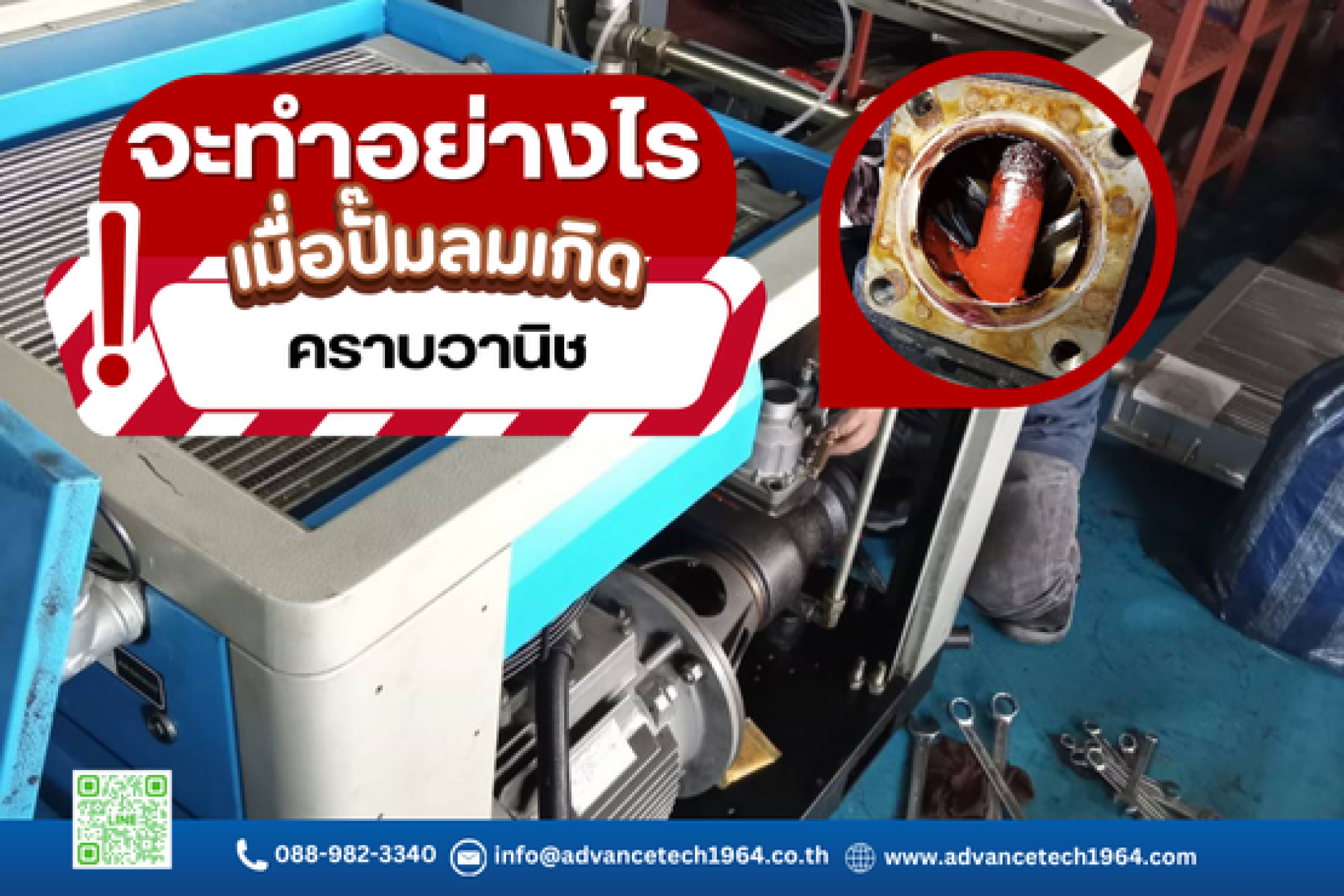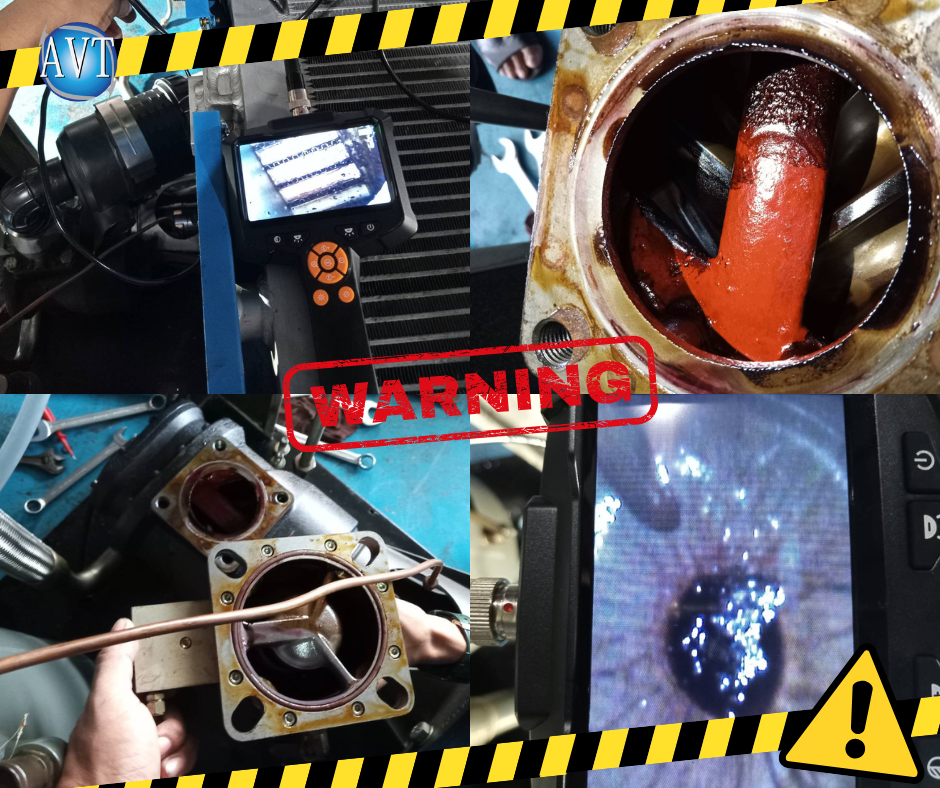In-depth analysis of 'Varnish' in Screw Air Compressors: Why the Screw Cannot Turn and How to Restore It?
Last updated: 19 Oct 2025
184 Views

Screw Compressor Seizure: Varnish Buildup Causing the Rotor to Jam
Air compressors are the vital heart of production in many industries. However, when varnish buildup occurs in the lubricant flow paths or within the oil system, it can cause the screw rotors to seize, leading to damage to the screw elements and resulting in excessive time and cost for repairs.
- Characteristics and Symptoms of "Varnish" to Be Aware Of
- Sticky brown/red deposits tightly adhering to metal surfaces in the lubrication system.
- Stiff/dragging rotors/screws, difficult to turn by hand, or intermittent rotational issues.
- Oil discoloration, sediment/sludge, abnormal viscosity, and a foul odor in the oil.
- Operating temperature higher than normal range / Restricted oil flow.

2. Causes of Varnish Formation and Rotor Seizure
2.1 Incompatible Oil Mixing
Base Oil Incompatibility (Oil Incompatibility) occurs if different base oils are mixed together, or if an oil change is performed without proper flushing, leaving residual oil that causes the oil molecules to undergo Phase Separation, directly leading to varnish formation.
2.2 High Temperature / Inadequate Cooling
- If the machine operates continuously at temperatures of $>$ 95 degrees Celsius for prolonged periods, the oil will degrade faster in an exponential manner.
- The cooler may be dirty or the Fan Motor may not be running at full speed, causing cooling deficiency.
2.1 Incompatible Oil Mixing
Base Oil Incompatibility (Oil Incompatibility) occurs if different base oils are mixed together, or if an oil change is performed without proper flushing, leaving residual oil that causes the oil molecules to undergo Phase Separation, directly leading to varnish formation.
2.2 High Temperature / Inadequate Cooling
- If the machine operates continuously at temperatures of $>$ 95 degrees Celsius for prolonged periods, the oil will degrade faster in an exponential manner.
- The cooler may be dirty or the Fan Motor may not be running at full speed, causing cooling deficiency.
2.3 Exceeding the Service Life of Spare Parts
- If consumable parts such as the Air Filter, Oil Filter, Separator, and Lubricant are not replaced according to the specified operating hours, this can allow contaminants (metal particles, dust) to accumulate. These particles act as catalysts, accelerating the aging of the oil and causing blockages in the oil system, which leads to premature oil degradation and varnish formation.
2.4 Inappropriate Operating Practices
Such as frequent Starting/Stopping, unusually high amounts of moisture contamination in the air, operating the machine outdoors in high temperatures, etc.
3. Restoration Plan for a Varnish-Affected System
The following outlines the steps to restore the system if varnish buildup is detected:
3.1 Varnish Removal and System Flush:
- Use a high-quality Varnish-Removing Flush Fluid (or specialized cleaning oil) specifically designed for screw compressors.
- Drain the old, contaminated oil.
- Fill the system with the flushing fluid and run the compressor for the duration specified by the fluid manufacturer (often 20 to 48 hours) to dissolve the varnish.
- Crucially, monitor the operating temperature during the flushing process.
The following outlines the steps to restore the system if varnish buildup is detected:
3.1 Varnish Removal and System Flush:
- Use a high-quality Varnish-Removing Flush Fluid (or specialized cleaning oil) specifically designed for screw compressors.
- Drain the old, contaminated oil.
- Fill the system with the flushing fluid and run the compressor for the duration specified by the fluid manufacturer (often 20 to 48 hours) to dissolve the varnish.
- Crucially, monitor the operating temperature during the flushing process.
3.2 Oil and Filter Replacement (The Triple Change):
- Drain the flushing fluid completely while it is still warm to ensure all dissolved contaminants are removed.
- Replace all filtration components: 1. Oil Filter(s), 2. Air/Oil Separator Element (This is critical as varnish will clog it)
- Refill the system with new, premium-quality synthetic lubricant of the correct type (avoid mixing incompatible oils).
3.3 Check and Replace Consumables:
- Replace the Air Filter and check the condition of the intake valve.
- Check and clean the Oil Cooler (both internal passages and external fins) to ensure efficient heat transfer.
- Replace the Air Filter and check the condition of the intake valve.
- Check and clean the Oil Cooler (both internal passages and external fins) to ensure efficient heat transfer.
3.4 Inspection and Seizure Check:
- If the rotor was completely seized, a manual check of the air end is necessary to ensure the rotors can turn freely before full startup.
- Inspect critical valves (e.g., Minimum Pressure Valve, Thermostatic Valve) for any sticking or clogging caused by varnish.
3.5 Return to Service and Monitoring:
- Start the compressor and monitor the operating temperature and differential pressure across the filters. Both should drop significantly compared to pre-flush conditions, indicating successful varnish removal and better oil flow.
- Consider performing a new oil analysis shortly after the flush (e.g., after 500 hours) to confirm system cleanliness.
Contect Us :
088-982-3340 (admin) , 088-982-3341 (engineer)
info@advancetech1964.co.th , engineer@advancetech1964.com
www.advancetech1964.com
info@advancetech1964.co.th , engineer@advancetech1964.com
www.advancetech1964.com
Related Content










